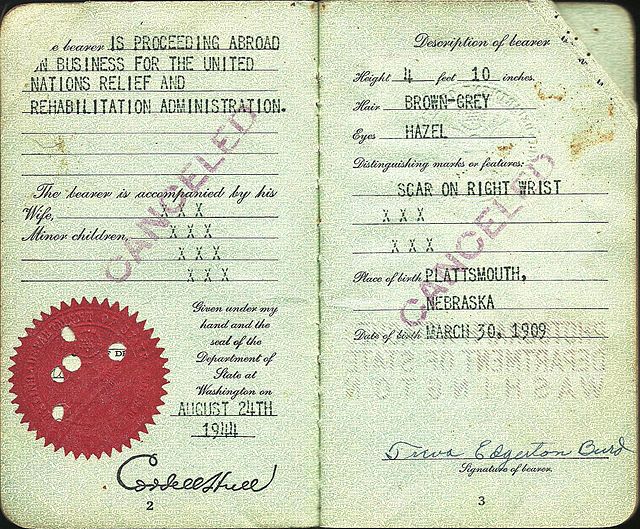History of the United Nations
The history of the United Nations has its origins in World War II beginning with the Declaration of St James's Palace. Taking up the Wilsonian mantle in 1944–1945, US President Franklin D. Roosevelt pushed as his highest postwar priority the establishment of the United Nations to replace the defunct League of Nations. Roosevelt planned that it would be controlled by the United States, Soviet Union, United Kingdom and China. He expected this Big Four would resolve all major world problems at the powerful Security Council. However the UN was largely paralyzed by the veto of the Soviet Union when dealing with Cold War issues from 1947 to 1989. Since then its aims and activities have expanded to make it the archetypal international body in the early 21st century.
1943 poster for the Allies of World War II—two years before the founding of the United Nations
Early United Nations official's passport from World War Two – working for UNRRA, issued in 1944 for the Middle East
UN headquarters in New York City
UN building in Vienna
Franklin Delano Roosevelt, commonly known by his initials FDR, was an American statesman and politician who served as the 32nd president of the United States from 1933 until his death in 1945. He was a member of the Democratic Party and is the only U.S. president to have served more than two terms. His initial two terms were centered on combating the Great Depression, while his third and fourth saw him shift his focus to America's involvement in World War II.
Official campaign portrait, 1944
A young, unbreeched Roosevelt in 1884, 2 years old
Roosevelt in 1893, at the age of 11
Roosevelt in 1900, at the age of 18








